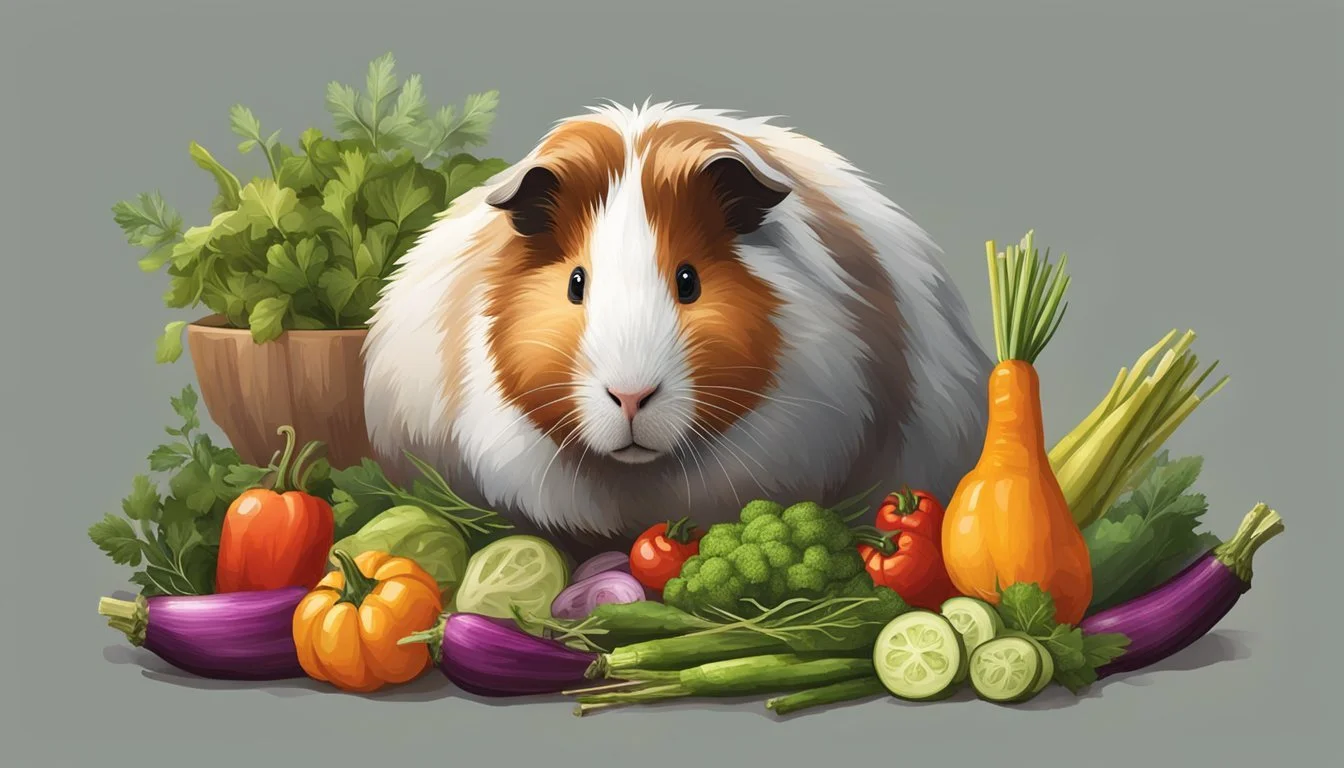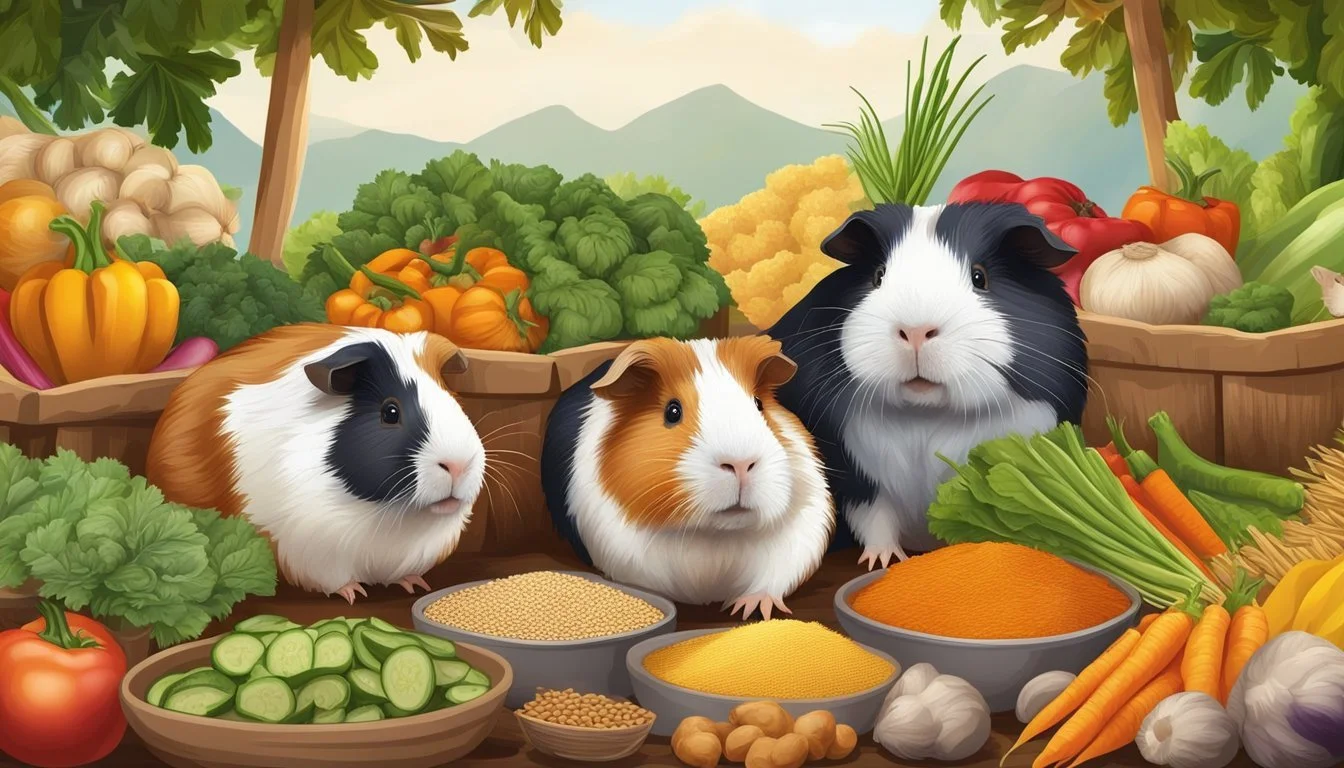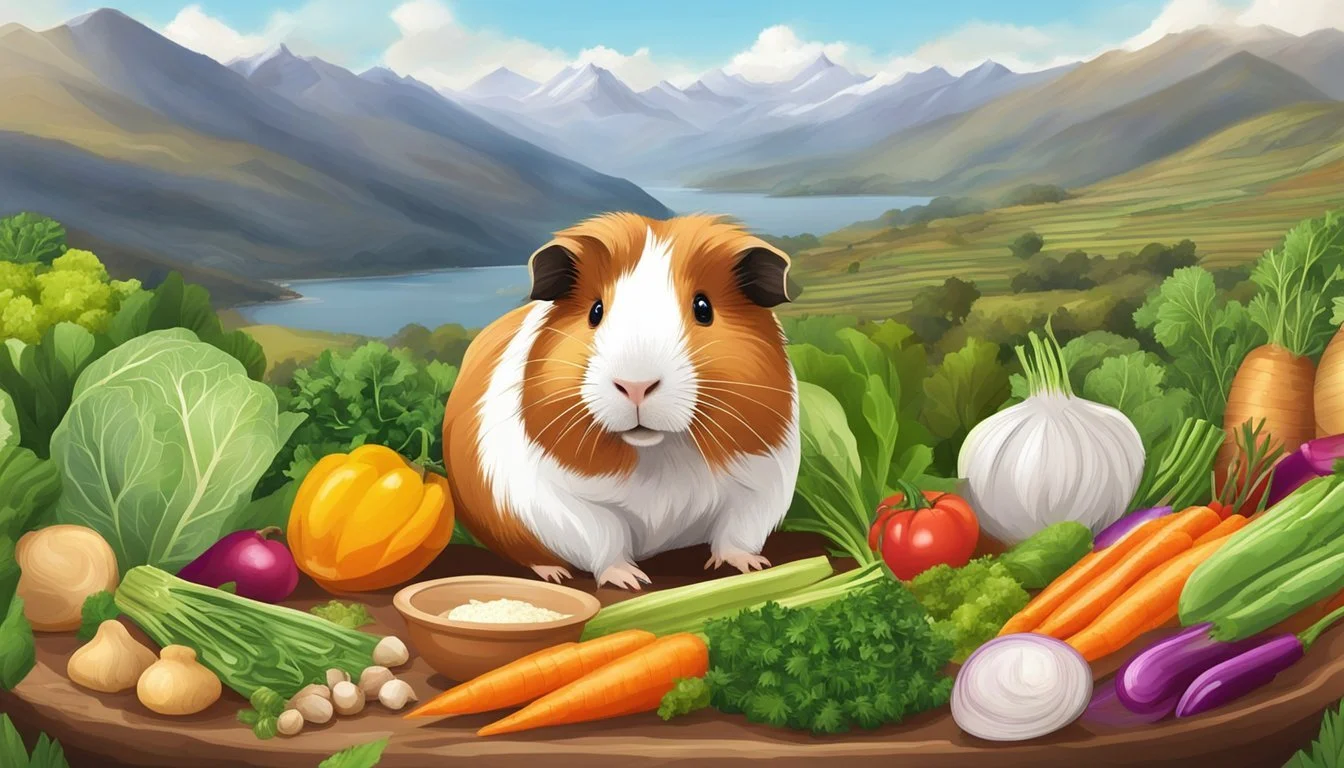Cuy Cuisine
Exploring the Andean Tradition of Guinea Pig Delicacies
Cuy, commonly known as guinea pig, is a traditional dish that holds a place of honor in Andean cuisine, particularly in Peru. For outsiders, the idea of consuming what is often considered a pet may seem unusual, but in the heart of the Andes, cuy is a celebrated food staple deeply rooted in cultural heritage. This small, furry animal isn't native to Guinea, nor is it a pig; it is a rodent more closely related to domestic rabbits and has been a valuable source of protein for thousands of years.
In Peru, the guinea pig's significance transcends mere sustenance. Historically, it played a role in religious ceremonies and offerings to deities such as Inti, the sun god, where it was sacrificed in return for a prosperous harvest. Today, despite globalizations and the adoption of various cuisines, the cuy maintains its revered status, commonly enjoyed in homes and festivity banquets alike.
As a culinary delicacy, cuy is typically cooked whole after being marinated in spices and can be roasted or fried, resulting in crispy skin and tender meat. Visitors to Peru may encounter the dish served during significant celebrations or as a specialty item in local restaurants eager to provide an authentic taste of Andean culture. This indigenous staple, now a symbol of national identity, continues to intrigue the palates of adventurous travelers and locals, heralding the rich and diverse gastronomic tapestry of the Peruvian highlands.
Historical Significance of Cuy
In the rich tapestry of Andean history, cuy emerges as a vital cultural element, interwoven with the traditions and beliefs of the indigenous people since Inca times.
Cuy in Inca Civilization
Cuy, or guinea pig, holds a place of distinction within Inca civilization, revered not only as a stable food source but also as a creature of ceremonial significance. Indigenous groups, particularly in Peru, have long regarded cuy as an integral component of their diet due to its high protein content and ease of breeding. These small rodents were, and continue to be, more than mere sustenance; they are an embodiment of both practicality and spirituality.
Aspect: Rituals
Significance in Inca Civilization: Cuy were sacrificed in honor of the sun god Inti and during key festivals for thanksgiving.
Aspect: Ceremonies
Significance in Inca Civilization: Eating cuy during special events symbolized community bond and respect for Pachamama, or Mother Earth.
Cuy Depictions in Art
Art from Inca and post-Inca periods frequently portrayed the cuy, highlighting its importance in Andean life. One notable instance is the presence of cuy in religious iconography, such as paintings of The Last Supper where cuy is depicted as the meal, signifying its traditional role in Peruvian sustenance. This representation of the guinea pig with Jesus and the disciples reflects an adaptation of Christian beliefs to local practices and symbolizes the blending of European and Andean religions.
Painting: Cuy often feature in still life and scenes representing family and religious gatherings, encapsulating both an artistic and a cultural motif.
Depictions: Cuy motifs are present in various forms of art, spanning ceramics and textiles, representing their ubiquitous role in the everyday lives of the Peruvians.
By examining the cuy in these contexts, it becomes evident that these animals are more than a dietary staple—they are a potent symbol of Andean identity and heritage.
Cuy as a Modern Delicacy
Cuy, once a vital protein source in the Andes, now graces the tables as a modern delicacy in Peru, with its presence undiminished in both everyday life and festival celebrations.
Cuy in Peruvian Cuisine
In contemporary Peru, cuy is not just a traditional dish; it's an integral component of the nation's culinary identity. This Peruvian delicacy, a variety of guinea pig, is often featured in restaurants, especially in regions such as Cusco and Arequipa. Travelers often seek out cuyerias, establishments specializing in preparing cuy dishes, to experience this local fare. The preparation of a cuy dish typically involves marinating the meat in spices before roasting or frying it to perfection.
Preparation Methods:
Roasted (Cuy al horno) - Marinated and roasted until crisp.
Fried (Cuy chactado) - Flattened and fried, often served with Andean staples such as potatoes or corn.
Eating Cuy During Festivals
Festivals in South America, particularly in Peru, are vibrant displays of culture where cuy often takes center stage. The National Day of Cuy is a perfect example, where this beloved Peruvian tradition is celebrated extensively. During such festivals, eating cuy goes beyond mere consumption—it becomes an act of cultural affirmation and communal bonding.
Festival Dishes:
Celebratory servings often include cuy alongside a variety of traditional accompaniments.
Cultural Significance:
Festivals highlight the deep-rooted reverence for cuy in Peruvian tradition, showcasing the enduring role of this ancient food in modern festivities.
Culinary Preparation of Cuy
Cuy, known for its significant role in Peruvian cuisine, undergoes a distinctive culinary process before it becomes a savory dish plated alongside traditional Andean accompaniments.
Traditional Cooking Methods
In traditional preparations, cuy chactado is a widespread method where the guinea pig is flattened and deep-fried until crispy. A marinade of local spices enriches the meat before cooking. Alternatively, cuy al horno, another popular style, involves roasting the seasoned guinea pig. The protein source is often rotated over a grill or baked, sometimes using a bamboo skewer for even cooking.
Serving and Accompaniments
The prepared cuy is typically served as a whole alongside staples of Peruvian food (What wine goes well with Peruvian food?) culture. Boiled or roasted potatoes are common, as is a side of corn or rice for added sustenance. Various dipping sauces, often made with aji (Peruvian chili peppers) and herbs, accompany the dish to enhance its flavors. The addition of these sides creates a balanced meal, blending the rich and protean guinea pig meat with the textures and tastes of traditional Andean sides.
Cuy in Andean Culture
Cuy, revered as a significant source of nutrition among the Andean people, remains a traditional element within their culture, reflecting the ancestral link between the ancient customs and modern dietary practices.
Cuy as a Dietary Staple
In the Andean region, cuy, also known as guinea pig, forms a central part of the diet. Dating back centuries, cuy has been valued not only for its proteic content but also for its role in traditional ceremonies and events. Especially in rural villages of the Andean highlands, cuy is a prized source of animal protein, easily raised in small spaces and a sustenance for those living in challenging agricultural conditions. Its meat is incorporated into various dishes, serving as a daily nutritional component for many families.
Rural and Urban Consumption Patterns
While in rural areas of the Andean region cuy is a household dietary staple, its consumption in urban centers like Lima occurs in more formal settings such as dedicated cuyerias - restaurants specializing in preparing cuy dishes. Travelers and visitors often seek out these establishments to experience this aspect of Andean culinary culture. The patterns of consumption reflect the societal structure, where rural communities directly raise cuys for sustenance, whereas urban populations primarily engage with cuy as a delicacy, signaling the cultural integration of the animal beyond its rural origins.
Nutritional Profile of Cuy
Cuy, a traditional Andean meat, is revered for its dense nutritional content, which includes a high protein count and a spectrum of essential vitamins and minerals.
Comparative Nutrition Facts
Cuy meat stands out as a low-fat and high-protein source, with a 100-gram serving containing approximately 20 grams of protein. In comparison to other meats, cuy is lower in calories and cholesterol, making it an advantageous option for those monitoring their dietary intake.
Table: Nutritional Comparison per 100g
Nutrient: Calories
Cuy Meat: 142 kcal
Chicken: 165 kcal
Beef: 250 kcal
Nutrient: Protein
Cuy Meat: 20.3 g
Chicken: 31 g
Beef: 26 g
Nutrient: Total Fat
Cuy Meat: 3.1 g
Chicken: 3.6 g
Beef: 15 g
Nutrient: Saturated Fat
Cuy Meat: 1.1 g
Chicken: 1.0 g
Beef: 5.9 g
Nutrient: Cholesterol
Cuy Meat: 38 mg
Chicken: 85 mg
Beef: 78 mg
Nutrient: Iron
Cuy Meat: 1.5 mg
Chicken: 0.9 mg
Beef: 3.5 mg
Note: Values are approximate and can vary with preparation.
Health Benefits and Considerations
Cuy is not only a staple protein source in the Andean diet but also a valuable contribution to a nutritionally balanced diet. It provides essential vitamins and minerals necessary for health, such as iron, potassium, and zinc, without the setbacks of high cholesterol or saturated fats. While the health benefits are clear, individuals should consider their personal dietary requirements and allergies when integrating cuy into their meals.
Ethical and Environmental Perspectives
When exploring the traditions of cuy consumption in the Andes, it is important to consider the domestication and breeding practices alongside the sustainability and ecological impact of this dietary choice.
Domestication and Breeding Practices
In the Andean regions of Ecuador, Bolivia, and Colombia, guinea pigs are not merely pets; they are a key protein source deeply ingrained in the local culture. These animals are domesticated and bred in rural villages, often in close quarters with the families that raise them. The breeding practices are tailored to maximize the size and health of the guinea pigs while maintaining the breed's inherent characteristics. Farmers have honed these practices over centuries, focused on creating a sustainable source of nutrition and income.
Sustainability and Ecological Impact
Guinea pigs hold a notable advantage over larger livestock due to their small size and efficient reproduction rate. From an ecological standpoint, they have a lower environmental impact compared to traditional meat sources like beef or pork. In terms of sustainability, cuy farming can be seen as an eco-friendly protein alternative. These rodents require less land and food and emit fewer greenhouse gases, effectively reducing the overall carbon footprint. Moreover, their manure can be used as a natural fertilizer, further contributing to the environmental benefits of their cultivation among Andean farmers.
Through these practices, cuy serves not only as an essential dietary component but also as a contributor to the environmental sustainability and economic stability of Andean communities.





